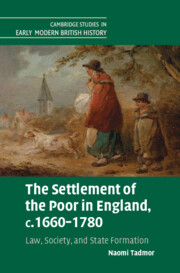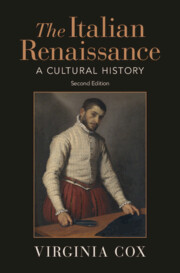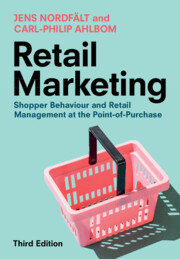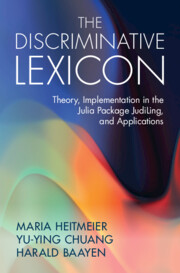Refine search
Actions for selected content:
3387874 results

A Narratological Commentary on Herodotus' Histories
- Coming soon
-
- Expected online publication date:
- December 2025
- Print publication:
- 31 December 2025
-
- Book
- Export citation

The Settlement of the Poor in England, c.1660–1780
- Law, Society, and State Formation
- Coming soon
-
- Expected online publication date:
- December 2025
- Print publication:
- 31 December 2025
-
- Book
- Export citation

Marriage and the Moral Imagination
- Coming soon
-
- Expected online publication date:
- December 2025
- Print publication:
- 31 December 2025
-
- Book
- Export citation

The Italian Renaissance
- A Cultural History
- Coming soon
-
- Expected online publication date:
- December 2025
- Print publication:
- 31 December 2025
-
- Book
- Export citation

Determining Provenance from Compositional Data
- Coming soon
-
- Expected online publication date:
- December 2025
- Print publication:
- 01 April 2027
-
- Element
- Export citation

Speech Act Theory
- Between Narrow and Broad Pragmatics
- Coming soon
-
- Expected online publication date:
- December 2025
- Print publication:
- 31 December 2025
-
- Element
- Export citation

Retail Marketing
- Shopper Behaviour and Retail Management at the Point-of-Purchase
- Coming soon
-
- Expected online publication date:
- December 2025
- Print publication:
- 31 December 2025
-
- Textbook
- Export citation

Unity through Particularism
- How Electoral Reforms Influence Parties and Legislative Behavior
- Coming soon
-
- Expected online publication date:
- December 2025
- Print publication:
- 31 December 2025
-
- Book
- Export citation

A Social and Economic History of the Theatre to 300 BC
- Coming soon
-
- Expected online publication date:
- December 2025
- Print publication:
- 31 December 2025
-
- Book
- Export citation

William Blake and Romantic Biology
- Evolution, Originality, and Organic Form
- Coming soon
-
- Expected online publication date:
- December 2025
- Print publication:
- 31 December 2025
-
- Book
- Export citation

Islam and Modern Cosmology
- Coming soon
-
- Expected online publication date:
- December 2025
- Print publication:
- 01 April 2027
-
- Element
- Export citation
Modelling the Divine
- Coming soon
-
- Expected online publication date:
- December 2025
- Print publication:
- 31 December 2025
-
- Element
- Export citation

The Discriminative Lexicon
- Theory, Implementation in the Julia Package JudiLing, and Applications
- Coming soon
-
- Expected online publication date:
- December 2025
- Print publication:
- 31 December 2025
-
- Book
- Export citation

Developmental Dilemmas
- The Role of Power and Agency
- Coming soon
-
- Expected online publication date:
- December 2025
- Print publication:
- 31 December 2025
-
- Element
- Export citation

Charting Translation Reception
- Methods and Challenges
- Coming soon
-
- Expected online publication date:
- December 2025
- Print publication:
- 31 December 2025
-
- Element
- Export citation

Byzantium and Landscapes of Loss
- The Recreation of Constantinople in the Laskarid and Palaiologan Eras
- Coming soon
-
- Expected online publication date:
- December 2025
- Print publication:
- 31 December 2025
-
- Book
- Export citation

Chance
- A Tale in Two Parts
- Coming soon
-
- Expected online publication date:
- December 2025
- Print publication:
- 31 December 2025
-
- Book
- Export citation

Religion and Food
- Coming soon
-
- Expected online publication date:
- December 2025
- Print publication:
- 31 December 2025
-
- Element
- Export citation

Economic Sanctions from Havana to Baghdad
- Legitimacy, Accountability, and Humanitarian Consequences
- Coming soon
-
- Expected online publication date:
- December 2025
- Print publication:
- 31 December 2025
-
- Book
- Export citation

On the Global Water Crisis
- A Taxonomy of Human–Water Challenges
- Coming soon
-
- Expected online publication date:
- December 2025
- Print publication:
- 31 December 2025
-
- Element
- Export citation
